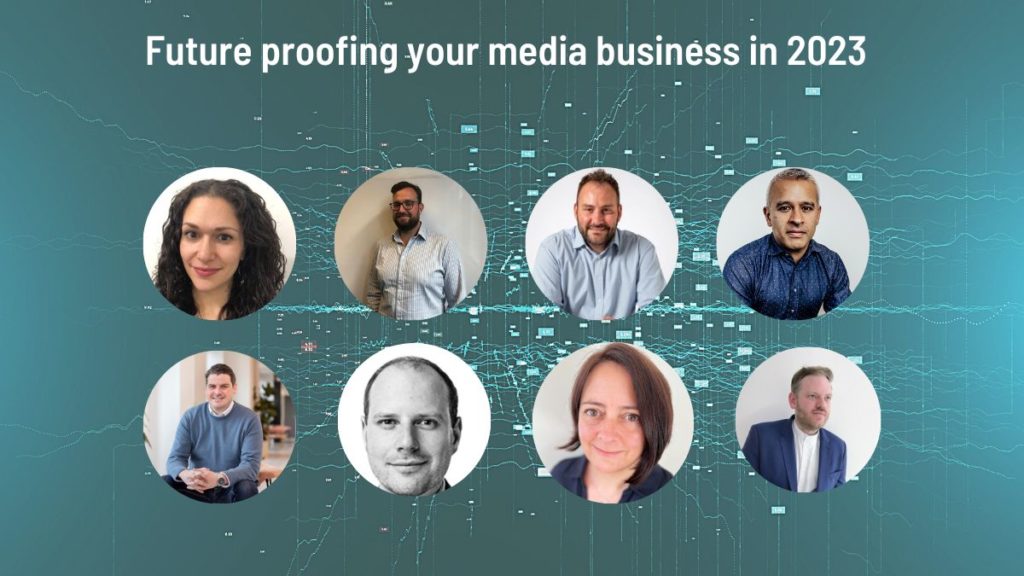It’s beginning to look like a Universal ID won’t be the solution to third-party cookie deprecation as some have suggested. Primarily because, with hundreds of different versions out there, it defeats the purpose they were created for – which was, as the name suggests, to connect every online customer journey universally. So it looks like media owners are going to have to explore alternatives that focus on keeping data lean, clean and, where possible, first-party.
In the second part of our roundtable, in partnership with mediarithmics, our panel delves down into the data, as we seek to understand what solutions might be most effective in balancing privacy with access. Chaired by NDA Editor Justin Pearse, the roundtable featured James Florence, head of advertising technology, Immediate, Alex Kirby, revenue operations director, Hello Magazine, Ryan Buckley, head of digital, Hearst UK, Jayesh Rajdev, Controller of Advanced Advertising, ITV, Nick Flood, global ad product & revenue operations director at Future, Chris Daniels, chief revenue officer, Haymarket Automotive, Jo Holdaway, chief data & marketing officer at Independent Digital and Phil Raby, general manager international, mediarithmics.
“I think we’ve seen that market and the discourse with brands [around first-party data] move on quite considerably but it’s still got a long way to go,” warns Jayesh Rajdev, Controller of Advanced Advertising at ITV. But, he adds: “Brands are starting to rethink the way they use our media. Rather than just being top of funnel, augmenting linear TV campaigns, we’re encouraging brands to reconsider the role of what addressable VOD can provide. They’re cross-selling, upselling and targeting that you might have only considered the preserve of long-tail programmatic.”
Immediate’s head of advertising technology, James Florence, is certainly taking the glass half-full perspective when dealing with the various challenges media fragmentation and tracking the user journey present, but warns against overload. “There’s a good opportunity for premium publishers because we’ve got all the data and they users. The main challenge is implementational. Having the resources and agility to address all the challenges and do it in a way that ties together. We’re solving for sustainability, third-party data, regulation. Doing it in a way where each of these solutions complements each other rather than hundreds of spot fixes, thinking about it in a holistic way, is quite hard.”
In the publishing world, there is similar optimism. Alex Kirby, Revenue Operations Director for Hello Magazine states: “It’s in a really good place. We’re all pretty good at creating cohorts and understanding behavioural data. How do we amplify that, get it into agencies and make sure we have the right skills in-house to talk about it in the right way?”
She adds that publishers also need to reach further: “The question we are asking next is what do we not have very good data on and how can we source it. For example through survey work, data creation or partnerships. It could be a good thing for your business to come together with your competitors and have a more concerted offering go out.”
Nick Flood, global ad product and revenue operations director at Future, takes issue with collaborations: “We spend hundreds of millions on content generation and I’m sure we have a relationship with the user as well. The more understanding that they only way to access the data through these channels is really key, which is why I’m quite cold on networks because I believe you show take your own property to market.”
There is some debate as to whether clean rooms will be the answer to privacy-first data sharing. Flood agrees that the argument for clean rooms is strong but is seeing very few on RFPs, while Ryan Buckley, head of digital at Hearst UK, has seen the opposite: “I’ve never had so many cleanroom technologies [discussions] directly with advertisers and clients as I have in the last year.” However he does admit that many still have to get fully on board.
Quality over cost consideration is always a sticking point, one that Chris Daniels, chief revenue officer at Haymarket Media illustrated with great clarity. “If you’re a data provider versus a premium publisher and they are 500 or even 1,000 times more expensive, [one data set] drove five times more impressions, but [the premium publisher] delivered 15 times better ROI. Unless you speak to the right person in an agency, or there is a mandate from the client, it’s incredibly hard to break through that wall.”
One answer to the data question is to focus on contextual advertising. Attendees have pointed out is hardly new but still greeted with some surprise when the subject is raised (are we on contextual 3.0?).
“All of the publishers we work with across Europe have some sort of contextual products up and running” reveals Phil Raby, general manager international, mediarithmics. “There are a lot out there doing contextual, mid-tier tech vendors or data science teams now wading in and trying to build machine learning models internally to deliver contextual so it’s an interesting space.”
But, contextual is an additional, rather than instead of: “It’s important as a news publisher to bear in mind that, for us, it’s all about a carefully curated mix of propositions because contextual isn’t going to save our skin. With all the brand safety concerns at the moment, I don’t see any advertiser saying, I want to be in your news section. We need to make sure we’re still offering behavioural targeting alongside contextual and traditional run of site, and the other first party products we offer,” explains Jo Holdaway, chief data and marketing officer at Independent Digital.
The first part of this roundtable writeup is here.









